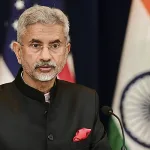For decades, the picturesque landscape of Jammu and Kashmir has captured the imagination of travellers, poets, and filmmakers alike. Known as the “Crown of India” and often romanticized as “Paradise on Earth,” the region has witnessed a remarkable resurgence in leisure tourism in recent years. Once overshadowed by conflict and uncertainty, Jammu and Kashmir is now steadily re-establishing itself as a premier destination for domestic and international tourists seeking beauty, adventure, and tranquillity.
Jammu and Kashmir is blessed with a diverse topography that includes snow-clad mountains, lush valleys, alpine meadows, gushing rivers, and sparkling lakes. From the enchanting Dal Lake in Srinagar to the breathtaking meadows of Gulmarg and Pahalgam, every corner of the region exudes a unique charm.
In the summer months, tourists flock to the Valley to escape the scorching heat of the plains. Houseboats float serenely on the lakes, and the Mughal gardens bloom with tulips, roses, and chinar trees, casting a spell on visitors. In winter, destinations like Gulmarg transform into skiing havens, drawing adventure lovers and winter sports enthusiasts from around the globe.
Leisure tourism in Jammu and Kashmir has seen a steady rise post-2020, as more domestic and international tourists seek destinations that offer a blend of natural beauty, cultural richness, and peaceful environments. Unlike pilgrimage or adventure tourism, leisure tourism centers around relaxation, sightseeing, and cultural exploration — and the region offers all these in abundance.
According to the Jammu and Kashmir Tourism Department, tourist arrivals have crossed previous records in several districts, with Srinagar, Gulmarg, Sonamarg, and Pahalgam remaining among the most visited. The development of infrastructure, improved road connectivity and a renewed focus on safety and hospitality have played a crucial role in boosting this trend.
Srinagar: The Jewel of the Valley
The capital city Srinagar remains the crown jewel of Jammu and Kashmir’s tourism circuit. Known for its beautiful lakes, gardens, and the old-world charm of Mughal architecture, Srinagar offers a leisurely escape into history and nature.
A Shikara ride on Dal Lake, staying overnight in a traditional houseboat, visiting the Nishat and Shalimar Bagh, or simply strolling through the alleys of old Srinagar with their intricate wood-carved homes and bustling markets — these are experiences that have become quintessential to the leisure traveller.
The city’s hospitality industry has expanded, with boutique hotels, guesthouses, and homestays offering personalized experiences that showcase Kashmiri culture, cuisine, and crafts. Local entrepreneurs are also curating heritage walks, culinary tours, and cultural evenings to add depth to the traveler’s journey.
While both Gulmarg and Pahalgam are known for their adventure tourism potential — skiing, trekking, river rafting — they are equally appealing to those looking for a slower, more indulgent holiday.
Gulmarg, located just 50 kilometers from Srinagar, offers world-class skiing facilities in winter and a lush green golf course in summer, one of the highest in the world. The gondola ride, providing panoramic views of the Himalayas, is an unmissable leisure activity. Luxury resorts in the region now cater to wellness tourists, offering spa treatments, yoga retreats, and Ayurvedic therapies.
Pahalgam, on the other hand, is the perfect family getaway. Scenic walks along the Lidder River, picnic spots in the Aru and Betaab Valleys, and pony rides through forested trails make it a favorite among vacationers. The town also boasts high-end cottages and eco-friendly lodges for those who prefer comfort intertwined with nature.
While Kashmir often takes center stage, the Jammu region, too, is emerging as a destination for leisure tourism. Known for the revered Vaishno Devi shrine, Jammu also offers untapped leisure opportunities.
The Patnitop hill station, nestled in the Shivalik range, is gaining popularity for its peaceful ambiance and accessibility. Recent development of the Patnitop Ropeway and adventure park has added to its tourist appeal. Mansar and Surinsar Lakes near Jammu city are also being promoted for boating and nature walks.
Moreover, heritage tourism is being actively encouraged in Jammu city, with initiatives to restore and promote Dogra architecture, temples, and museums. This blend of history and relaxation is appealing to a wide demographic of leisure travelers.
An essential component of leisure tourism is the opportunity to immerse oneself in local culture — and Jammu and Kashmir is a treasure trove in this regard.
Kashmiri handicrafts, including Pashmina shawls, papier-mâché artifacts, and intricate woodwork, attract tourists eager to take home a piece of the region’s rich artistic legacy. The local cuisine — with dishes like Rogan Josh, Gushtaba, Dum Aloo, and Kahwa — offers a flavorful journey into Kashmiri culinary traditions. Food trails and cooking workshops are slowly becoming part of the tourism itinerary.
Cultural festivals like the Tulip Festival in Srinagar, winter carnivals in Gulmarg, and local Sufi music nights have added layers of vibrancy to the leisure experience.
Recognizing the potential of leisure tourism, the government of Jammu and Kashmir, supported by the central tourism ministry, has launched a slew of initiatives aimed at revamping infrastructure, ensuring tourist safety, and promoting the region through global tourism expos.
The 2023-24 tourism policy emphasized sustainable and inclusive tourism development, with incentives for eco-tourism, digital bookings, and homestay models. Private stakeholders have also stepped in, investing in hospitality chains, curated experiences, and adventure-based leisure offerings.
The ‘Back to Village’ and ‘Tourist Village’ programs have not only improved village-level amenities but also opened up lesser-known destinations to leisure tourists — from Gurez in the north to Bhaderwah and Kishtwar in the south.
Despite the optimistic outlook, leisure tourism in Jammu and Kashmir faces its share of challenges. Seasonal constraints, political perceptions, and environmental concerns — particularly related to over-tourism in popular areas — need proactive attention.
Waste management, sustainable development, and maintaining the delicate ecological balance of the Himalayas must be part of any long-term tourism strategy. Tourist education, community engagement, and responsible travel practices will be crucial in ensuring the Valley remains a haven for generations to come.
Security concerns, though much reduced in recent years, still play a role in shaping perceptions. Continuous confidence-building through transparency, media coverage, and positive storytelling is needed to attract hesitant travellers.
As leisure tourism finds new expression in Jammu and Kashmir, it brings with it not just economic revitalization but also a narrative of normalcy and hope. Every traveller who chooses to unwind amid the Valley’s mountains or relax by a riverside cottage in Jammu contributes to a broader story of rediscovery and resilience.
With a commitment to sustainable growth, enhanced connectivity, and cultural preservation, the region stands on the cusp of a tourism renaissance. For those seeking beauty, serenity, and soul-stirring experiences, Jammu and Kashmir remains not just a destination, but an emotion.
(Author is a research scholar and can be reached at: [email protected])








